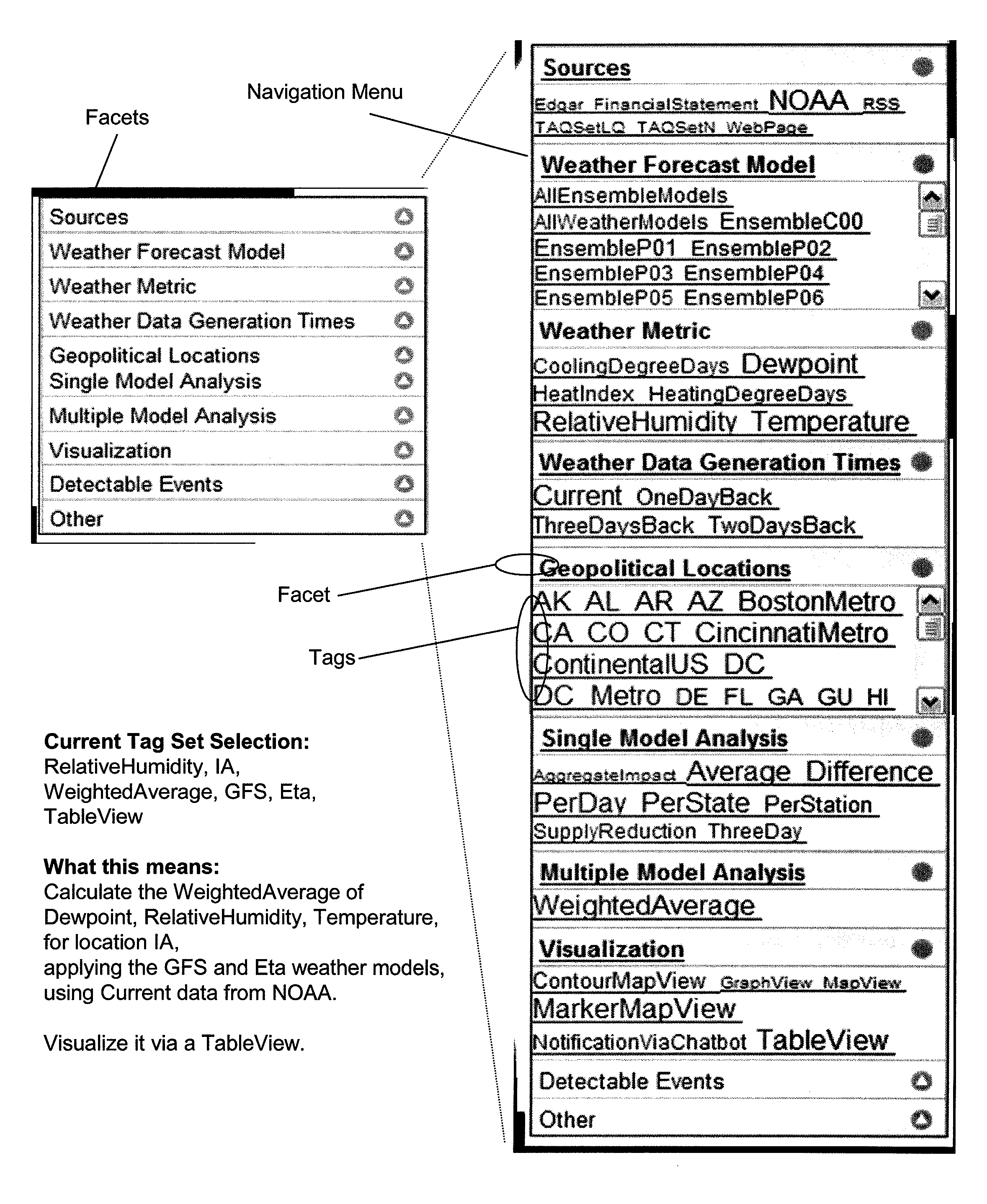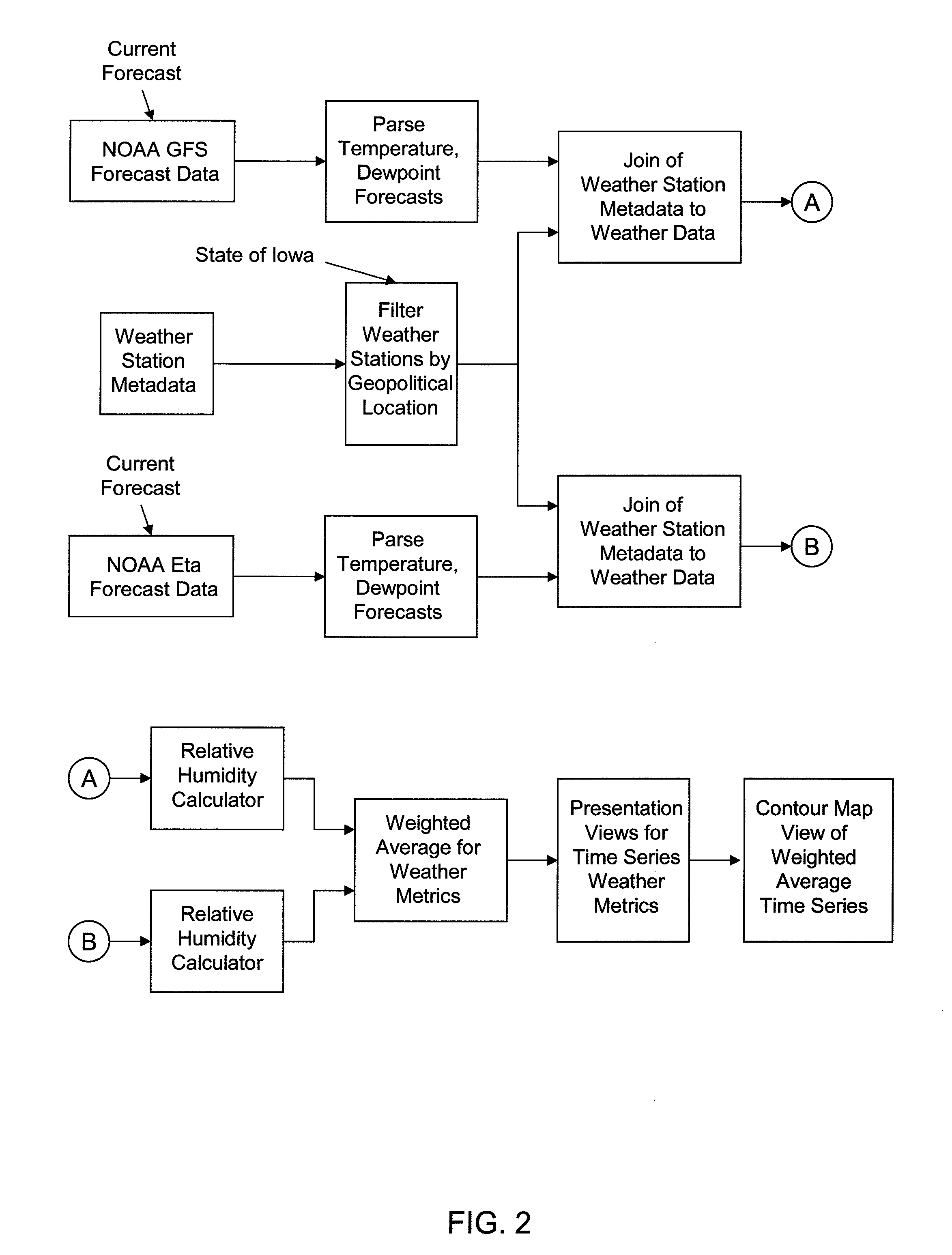Describing formal end-user requirements in information processing systems using a faceted, tag-based model
a technology of information processing system and requirements, applied in the field of requirements engineering in information processing system, can solve the problems of difficult to elicit formal software requirements from end-users, and difficult to concisely describe requirements
- Summary
- Abstract
- Description
- Claims
- Application Information
AI Technical Summary
Benefits of technology
Problems solved by technology
Method used
Image
Examples
Embodiment Construction
[0033]This disclosure incorporates by reference herein in its entirety, Bouillet et al. A tag-based approach for the design and composition of information processing applications. Object-Oriented Programming, Systems, Languages and Applications (OOPSLA) '08, to be published Oct. 19-23, 2008.
[0034]In this disclosure, we provide a novel technique for describing end-user requirements. In an exemplary embodiment, the technique utilizes faceted, tag-based functional requirements that are elicited from end-users. The facets represent different dimensions of both data and processing, where each facet is modeled as a finite set of tags that are defined in a controlled folksonomy. The faceted, tag-based functional requirements are the starting point of a top-down lifecycle where workflows and individual services are designed, explicitly keeping in mind the needs of the composition. The requirements are taken by enterprise architects who design workflow templates that are also associated with...
PUM
 Login to View More
Login to View More Abstract
Description
Claims
Application Information
 Login to View More
Login to View More - R&D
- Intellectual Property
- Life Sciences
- Materials
- Tech Scout
- Unparalleled Data Quality
- Higher Quality Content
- 60% Fewer Hallucinations
Browse by: Latest US Patents, China's latest patents, Technical Efficacy Thesaurus, Application Domain, Technology Topic, Popular Technical Reports.
© 2025 PatSnap. All rights reserved.Legal|Privacy policy|Modern Slavery Act Transparency Statement|Sitemap|About US| Contact US: help@patsnap.com



